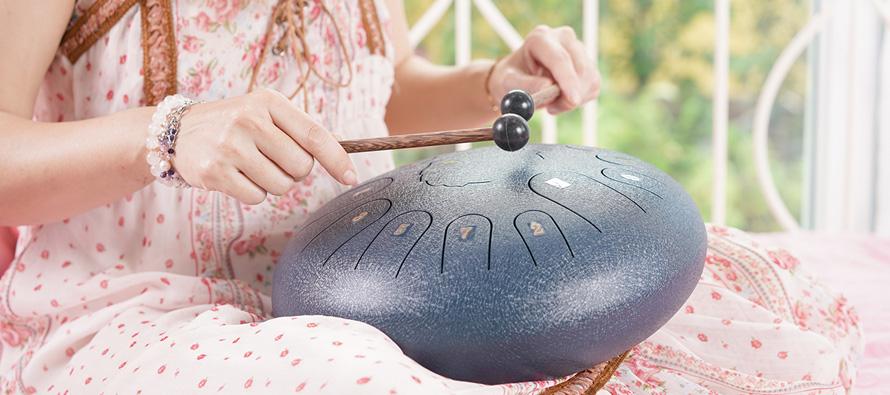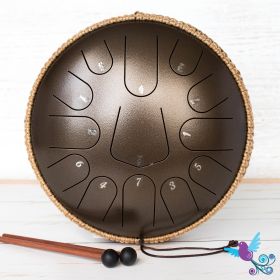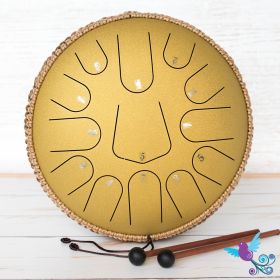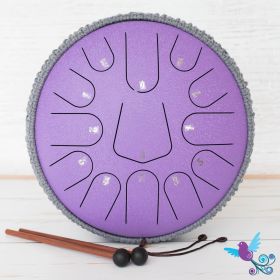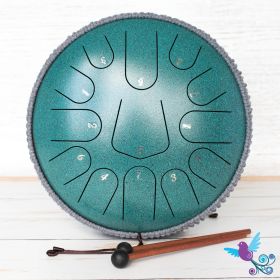Using a tongue drum to play the ’Simon’ musical memory game with your kids
A musical memory game is fun, engaging and educational. As well as running Shop Naturally and selling tongue drums and kalimbas, I am a classically trained musician and I run music classes in my music studio, mainly using the tongue drum, but we use other instruments too. These classes are called Music By Numbers, and they are focused on giving people a hands on musical experience without ever having to learn how to read music.
In this blog post I am showing you a game of ’Simon’ that I’m playing with a group of women in their 50’s & 60’s. There’s something very special about working with women in this age bracket. Not only is it because they’re ’my people’, but as we get older (and I’m speaking from experience), perimenopause and menopause can do things to our brains and memory. Some people have some confidence issues and just don’t think they can learn something new. Watching people gain confidence and break barriers and see other women in exactly the same situation struggle and then succeed is a really beautiful thing to facilitate.

What is the memory music game Simon?
It’s a battery operated musical memory game with 4 brightly coloured buttons that flash and play a musical note. When you turn Simon on, one note flashes. You copy. Simon then plays the original note and then adds one more. You copy. You get it right, Simon plays those two and adds one more. You copy. And so on and so forth until you hit the wall.
Adapt the musical memory game Simon for the Tongue Drum
In one of my Music By Numbers classes we started to play a game of Simon, and after a couple of minutes, I asked the participants if I could record the rest of it. There’s no names or faces and they were on their best behaviour for the camera. What follows is a completely unedited video that lasts around 10 minutes.
If you’re an adult buying a tongue drum for a child, you can watch the video and adapt the game to play with them. I will at a later date record a series of virtual Simon games for everyone to play along with at home. For now, here’s the video and some notes from me about the game and what the participants get out of it.
The Full Simon video for the Tongue Drum
1st minute - I am establishing that we started the game before the video started and I'm showing you what we've done so far.
At minute 1, you can see we're standing in a circle around the drum, and to keep everyone well and truly on their toes, we move around so the notes aren't in the same position for the player anymore. That familiarity of exactly where the notes are in relation to where you're standing just got taken away. These are things you can challenge your kids with while playing the game at home.
At around the 2 minute mark, we have a conversation so I can understand how my students are processing the information. For a trained musician, as I explain, this is a really simple game because our ears are trained. For anyone in the class, it's a numbers memory game with the added bonus of a sound being attached to the number.
You will also see at around 2:10 that when I added the extra number, I played a higher version of the 5 and one of the students played the big 5 in the middle. So now, it's not just a game of remembering numbers, you're watching for the position and listening for pitch. You'll notice on the drum that there's more than one 5, 6, 7 and 1. Some of the numbers have a dot below or above them to indicate they are higher or lower pitch. You can start to see just how many senses and pieces of information are at play in this very educational 'game' and that not everyone gets it right first go. In my classes, if everyone gets it right first go, I need to up my game and make it a little harder. As a teacher, or as a parent playing this game with a child, the idea is to make the challenge enough that it's making the student think but not so challenging that they give up. It's supposed to be FUN as well as educational.
Around the 3 minute mark, I can see that it's starting to be quite the challenge, so I allow everyone to have a couple more goes to get the pattern cemented in before I make it even harder. (you can hear me do a little 'swear' at 4:44 - just be warned, it's on the 's' word, because I was literally making the melody up as I went along and I hesitated.
At around the 5:30 mark, I'm actually starting to introduce a pattern that the students haven't cottoned on to yet, as my plan is to step all the way down from the high 1, then all the way down the scale - 7, 6, 5, 4, 3, 2, 1. A part of the game and the great thing about devising games like this is to get students, and at home, your kids, to recognise patterns. So instead of remembering the numbers 1, 7, 6, 5, 4, 3, 2, 1 - they can just remember that it's a sequence of all the numbers backwards. As a professionally trained musician and theory wiz, the reason I can pick up almost any piece of sheet music and just sight read it is that I am very proficient and recognising patterns. These skills translate to lots of things in life, not just music. Engaging the brain like this is a great way to learn how to look at what's in front of you and make things easier for yourself.
While I planned to make this pattern step all the way down to 1, it was clear that half way down, everyone's brains were in overload, and a couple of emotional things came up for someone in the class, and it is at this point that I have cut the video off because that exchange we had about brain overload and triggers is something private.
Which tongue drum did I use for this exercise?
In the Music By Numbers classes, we use the Hluru 13 note mellow drum because they have a cleaner sound with less overtones that ring. When 6 people are playing at once, it does make a difference. You can, however, play this game on ANY of the tongue drums that have numbers on them.
